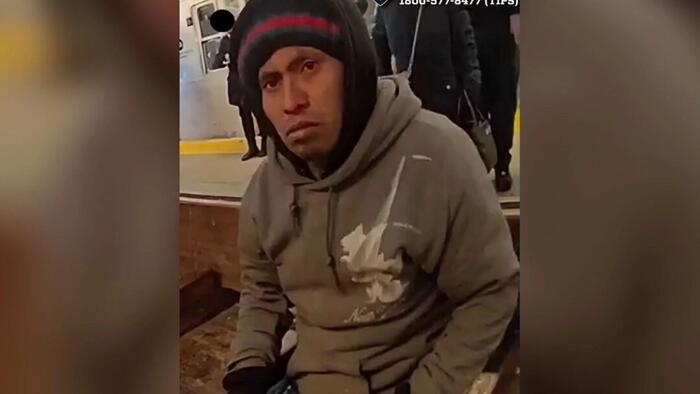Sebastian Zapeta-Calil, a 33-year-old Guatemalan migrant, has gained notoriety following his arrest for allegedly committing a horrific act of arson against an unsuspecting woman on a Brooklyn subway train. The incident has shocked the local community and sparked a debate over immigration policies and public safety. Zapeta, who entered the United States unlawfully after previously being deported in 2018, is accused of lighting the woman on fire while she was sleeping in the subway car. Eyewitness accounts suggest that Zapeta remained calm as he watched the flames engulf the victim, whose identity has yet to be revealed. This tragic event has been described by officials as one of the most heinous acts committed in New York City.
Zapeta’s immigration history adds a complex layer to this case. After being apprehended by U.S. Border Patrol in Arizona in June 2018, he was served with an order of expedited removal and deported back to Guatemala within a week. However, it appears he managed to re-enter the United States at an unspecified date, subsequently living in a taxpayer-funded shelter system in New York City. His history raises pressing questions about the enforcement of immigration laws and the adequacy of systems designed to process and identify individuals without legal status, especially when such individuals are accused of violent crimes.
The setting of the crime and the nature of the act itself have also drawn significant media attention. Surveillance footage shows Zapeta calmly approaching the woman and igniting her clothing with what is believed to be a lighter, causing her to be engulfed in flames within seconds. The failure of bystanders to intervene and the presence of witnesses who opted to record the event rather than help has led to public outrage. This has elicited broader discussions about societal responsibility and the moral implications of witnessing a violent crime without action.
Law enforcement’s response to the incident has highlighted community vigilance in combating crime. Transit police apprehended Zapeta after receiving tips from three high school students who recognized him from footage circulating in the media. New York City Police Commissioner Jessica Tisch commended the students for their prompt action, emphasizing that their intervention was critical in bringing Zapeta into custody. This case has been labeled by officials as a prime example of depravity, illustrating the severity of violent acts that can occur in public spaces and the potential dangers faced by individuals in cities.
Notably, reports indicate that the two individuals involved did not previously know each other prior to the tragic event. Despite Zapeta’s relatively clean criminal record in New York City, the shocking nature of his alleged actions raises concerns about public safety and the potential for similar incidents in the future. The community response has been one of disbelief, forcing residents to confront the reality of such violence occurring within the urban environment they navigate daily.
The terrible incident involving Sebastian Zapeta-Calil and his alleged crime underscores significant tensions surrounding immigration and public safety in the United States. As society grapples with the implications of his illegal status and violent actions, broader discussions regarding the treatment of migrants, support systems, and law enforcement measures will likely remain at the forefront. The tragedy has instigated a renewed call for reform and greater scrutiny of how individuals re-enter the country and the potential risks they pose to the communities in which they live. Ultimately, this case serves as a grim reminder of the complexities surrounding immigration policies and the urgent need for comprehensive understanding and solutions to address such challenges.

